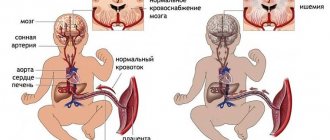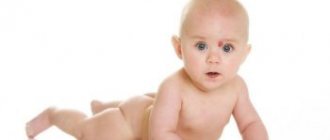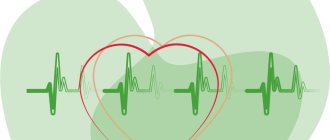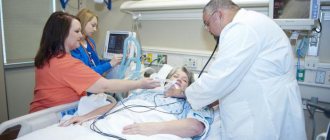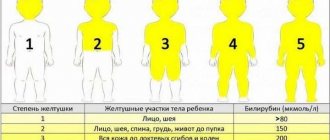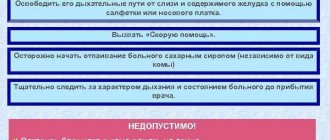Birth trauma is any violation of the function or integrity of the child’s organs or tissues that occurs directly during labor. According to statistics, birth injuries are detected in approximately 10% of newborns. In the future, this has a significant impact on the physical and mental development of the child, and sometimes irreversible damage occurs. Damage to the central nervous system and peripheral nervous system is especially dangerous in this case.
In order to provide the baby with the necessary help in a timely manner and avoid serious problems in the future, birth injuries must be diagnosed immediately. Also, they all require certain therapeutic measures. Our doctors will help you with this. Come for an examination at our center.
What is birth trauma?
This is a mechanical effect that leads to disruption of the integrity of the organs and tissues of the newborn during childbirth.
The diagnosis of birth injury is made by taking into account the mother’s obstetric history, the characteristics of the course of labor, examination data and a number of additional studies of the baby (ultrasound, radiography, electroencephalography).
Childbirth traumatism has a broad classification: mechanical damage that occurs due to external negative influence, and hypoxic damage due to oxygen starvation of tissues. It can be spontaneous, or caused by the action of obstetricians and gynecologists.
If we talk about injuries, the classification is as follows:
Damage to the central nervous system (CNS) is often determined not only by mechanical impact, but also by associated acute fetal hypoxia. May be accompanied by injuries to the bones of the skull and dura mater (intracranial): • epidural hemorrhages or cephalohematomas are localized between the bone and periosteum; • subdural – between the dura and pia maters; • rupture of the tentorium cerebellum, which forms during delivery in the breech presentation; • subarachnoid hemorrhages are localized between the thin, arachnoid membrane and the cerebral hemispheres.
The most severe injury is cerebral hemorrhage. Of these, hemorrhages around the ventricles of the brain or directly into the ventricles have an unfavorable prognosis. Such injury is facilitated by the prematurity of children, the immaturity of the nervous system and its high sensitivity to hypoxia.
Damage to the peripheral nervous system The most common among them is damage to the brachial plexus, leading to partial or complete paresis of the child’s arm. Often combined with a clavicle fracture. The cause of this birth injury is the baby's shoulders getting stuck in the pelvic outlet and improper delivery by the medical staff.
Birth injury to the spinal cord of a newborn - hemorrhage into the epidural tissue and paralysis of the thoraco-abdominal diaphragm are now extremely rare. In connection with modern gentle management of childbirth.
Damage to the child's musculoskeletal system
The most common is a clavicle fracture. By applying a special bandage, a quick recovery can be achieved. Fractures of the humerus and femur are injuries from old obstetrics textbooks.
Birth trauma, which only osteopaths can see, includes a block of the occipital bone and the first 2 cervical vertebrae, subluxation of the upper cervical vertebrae. With these “hidden” minor pathologies, pronounced asymmetry of the baby’s body tone and malocclusion may develop.
Damage to a child's soft tissues
These include muscle hemorrhages and skin abrasions.
The most significant of them is hemorrhages in the sternocleidomastoid muscle, which in the future can give a picture of false torticollis.
Treatment at Doctor Simkin's Clinic
In our clinic, therapy is aimed at eliminating the causes and unwanted symptoms of birth trauma. The main role in the mechanism of development of such consequences is played by anatomical and physiological disorders in the functioning of the body.
Treatment of birth trauma involves a complex effect on the child’s body. The goal of the course of therapy is not only to get rid of symptoms, but also to find the root cause of pathological changes. Only in this case is it possible to achieve the goals set and restore the child’s lost health.
What does a doctor do
The first stage of work is to examine the child and identify deviations from the norm. They can be caused by both anatomical changes and failures in the coordinated functioning of organ systems. The doctor identifies the most significant areas of osteopathic damage. After the examination, the second stage begins - the use of osteopathic techniques to eliminate the identified problems. An osteopathic doctor influences damaged structures through gentle external influence with his hands.
A child’s body is not yet a formed system. Its work can be compared to a complex mechanism. The cause of a violation of any function is not always associated with a specific part in the violation zone; it is often caused by damage in another area or a failure in the interaction between parts of the whole. The human body also works on this principle.
By influencing certain areas of the body with the help of hands, the doctor corrects pathological changes not only at the site of impact, but also in remote areas of the body. Eliminating tension in muscles and connective tissue leads to improved blood supply to tissues and nerve function. At the same time, existing problems are eliminated and the body’s functioning is “tuned” to a natural physiological way.
When to seek help from an osteopath
It is recommended to visit a doctor after discharge from the hospital, even if the birth proceeded without visible complications. The sooner the child is examined by an osteopath and any changes in the functioning of the body are identified, the easier they are to correct.
This statement is especially true with regard to damage to the skeletal system. Injuries to the head and neck during childbirth are common and easier to correct in infancy, when the child’s bones, ligaments and soft tissues are more pliable and sensitive to external influences, and also before the chain of disorders caused by birth trauma has not gone too far. It is better to carry out a course of osteopathic procedures before the child begins to actively move (6-7 months) in order to avoid the progression of existing pathologies.
What are the reasons?
As the fetus develops, the world in which it grew, lived and existed becomes cramped, squeezing and at a certain moment pushes, spews into the unknown. And these “doors”, that is, the birth canal, do not always open easily - this is what causes damage.
It is very difficult to predict the course of labor. Even the calmest process of the birth of a baby has an impact on its body: the body is under pressure, and it takes enormous effort to be born.
There are many prerequisites for birth trauma: a woman’s lifestyle, characteristics of pregnancy, past infections, exacerbation of diseases, fetal development abnormalities, discrepancy between the size of the baby’s head and the mother’s pelvis. Circumstances such as the tactics of medical personnel, the administration of drugs that stimulate labor, and the method of delivery are important.
Analysis of the causes of birth trauma in newborns allows us to identify 3 groups of predisposing factors . Some authors note that they are also immediate causes.
Associated with the woman’s condition: • complications of the second half of pregnancy, for example, gestosis; • pathologies of the uterus, for example, kinks, etc.; • narrow pelvis; • post-term pregnancy; • maternal age: the likelihood of complications in the form of birth trauma in babies is higher in very young mothers - up to 18 years old, as well as already “aged” - after 30 years, if we are talking about repeated births - then after 35 years; • characteristics of work and health, bad habits.
Related to the condition of the fetus: • if the fetus is not positioned correctly in utero; • if large (although this factor depends not only on it); • lack of water; • umbilical cord entanglement; • prematurity; • asphyxia during intrauterine development and childbirth; • incorrect positioning of the fetal head as it passes through the birth canal.
With the course of the birth process: • if labor is rapid or, conversely, protracted; • discoordination of uterine contractions and their features, for example, weak or, conversely, too violent; • excessive use of oxytocin in case of weak labor; • the use of obstetric forceps (which are now practically not used in obstetrics); • vacuum extraction of the fetus; • caesarean section (difficulty in removing the baby); • Kristeller's maneuver is prohibited, but is still used in obstetrics. The doctor presses on the fundus of the uterus, helping her push out the baby. But, often, it simply “squeezes out” the child.
The likelihood of fatal consequences is higher when several factors are combined.
How is childbirth normal?
Normally, during natural childbirth, the fetus leaves the uterus through the narrow cervical canal, and then the vagina, head first, paving the way for the body. Literally, the child must squeeze through a “tunnel” that does not suit his parameters, in which enormous pressure is exerted on him from all sides.
Since this is how nature intended the process of childbirth in humans, it provided a mechanism that allows the child to pass all tests without damage. All bones of the fetal skull remain unconnected. Therefore, when passing through the birth canal, they can shift without breaking, and after leaving the mother’s womb, they can gradually restore their normal position. In addition, the entire body of the fetus is built in such a way that its proportions allow it to overcome all the difficulties of birth without damage. But, unfortunately, not everything always goes as nature intended.
Symptoms of injuries
A newborn, unlike an adult, has pliable bones, because some of them consist of almost half of cartilaginous tissue. What is it for? First of all, to be able to pass through the birth canal, so that the main support of the small body can withstand the loads during childbirth.
For example: the occipital bone is formed by 4 separate bones, which are connected by cartilage, and their complete fusion occurs only by the age of 7. This provides space for the baby's growing brain, as well as adaptation to changes in atmospheric pressure during childbirth, etc.
There is danger hidden in this adaptation mechanism. If something goes wrong, there is a high risk of birth injury. Every child is at risk. Symptoms depend on what kind of injury the baby received.
In case of soft tissue injury, abrasions, scratches, etc. are considered the most common. Diagnosis is carried out during a visual examination of the baby by a neonatologist. As a rule, they are not dangerous, rarely cause complications and require only local treatment. There are also more serious ones, which occur when the fetus is in an unnatural position and are accompanied by swelling and pain.
Other, more complex injuries include:
• Birth tumor – swelling with pinpoint hemorrhages in the parieto-occipital region of the head. Symptoms develop as they pass through the birth canal and disappear within 1–4 days. • Cephalohematoma – hemorrhage in the area of the skull bones. This is a dense, elastic hematoma, but painless.
In case of injury to the musculoskeletal system, the most common are injuries to the collarbone and limbs, and these problems are classified as obstetric birth trauma.
Fractures without displacement are not diagnosed immediately, but only after a while when characteristic symptoms appear: dense swelling, indicating the formation of a callus. And this is a signal for parents, a reason to visit a doctor and rule out injury.
Symptoms of displaced fractures will be: • lack of active movements; • intense, hysterical crying, which is explained by severe pain; • swelling in the area of the fracture.
With such an injury, there is a decrease in basic reflexes, depression of tone and the development of torticollis.
In case of injury to internal organs They arise as a result of a negative external impact on the fetus as a result of a pathological birth process. External signs in newborns appear only after 3 or more days; most often, hemorrhages are detected in the liver and adrenal glands. But as soon as the hematomas rupture, the following symptoms appear: • repeated vomiting; • muscle hypertonicity; • inhibition of some reflexes; • lowering blood pressure, etc.
In case of trauma to the nervous system The concept of birth injury of the spinal cord in newborns includes: hemorrhages, stretching, compression or even rupture at different levels, damage to roots, plexuses, spinal and cranial nerves. Such consequences are associated with various symptoms and are quite serious, but they directly depend on the diagnosis: • decreased muscle tone; • absence of one or more reflexes; • weak cry at birth; • unnatural act of breathing; • paresis or paralysis, etc.
For mild injuries of the central or peripheral nervous system, the prognosis is favorable, although many of them are accompanied by changes in normal muscle tone, inhibition of reflexes and basic motor reactions.
With intracranial birth trauma, for example, hemorrhages, extremely severe symptoms develop, but they depend on the location of the hematoma.
Common signs include: • sudden and sharp deterioration in the condition of children; • change in cry, sounds similar to meowing and moaning appear; • abnormal movements; • thermoregulation disorders; • suppression of reflexes, up to complete absence; • violation of the act of sucking and swallowing; • attacks of suffocation; • tremors and convulsions; • pathological regurgitation and vomiting; • anemia.
If cerebral edema or hematoma increases, death is possible.
Prenatal therapy
Alison Hunter, Shirley Ward
Development of therapy for birth and intrauterine injuries
In the late 70s, in our practical work, we came to the point of providing real assistance to clients in overcoming the birth and intrauterine trauma they had experienced. We relied on Frank Lake's hypothesis that any trauma experienced by the mother during pregnancy is transmitted through the umbilical cord to the fetus. In addition, we have established that the fetus, being in the womb of a mother who is experiencing some kind of traumatic situation, is, as it were, saturated with the negative atmosphere of this traumatic situation. Thus, we came to the conclusion that the fetus is influenced by trauma not only through the umbilical cord, but also through the aura of the maternal field during the entire period of prenatal development.
The methodology of our work was that the client was asked to lie on a mattress located on the floor, surrounded by protective pillows and, if it was comfortable for him, curl up in a fetal position. By concentrating on deep breathing, he connected with his senses, directing them to explore the body, mind and spirit in order to localize this primal trauma. Healing appears to occur when the client returns to this early trauma and recognizes that the fetal, infant, or young child's response should no longer be reproduced in adult life. From this moment on, behavior, as a rule, changes quite strongly and an adult begins to behave rationally and adequately, and not like an unreasonable child.
“The way a person was born seems to be closely related to his general outlook on life, the balance of optimism and pessimism, his attitude towards other people, his ability to withstand the blows of fate and achieve his goals.” Stanislav Grof.
THE BIRTH SCENARIO BECOME THE LIFE SCENARIO
During therapy, when we guide a client from conception to birth, it becomes more and more obvious to us that it is the birth scenario that becomes the life scenario, and the human body is capable of not only completely remembering this birth scenario, but also translating it into real life - How, we don’t yet know. We know that there are three parts of birth trauma that need to be healed: the emotional feeling, the physical feeling, and the historical memory. The whole process seems inexplicable and many clients believe that their negative attitude towards life is incurable and irreversible. Traumatized people suffer from crippling feelings of being unloved, rejected, and an unbearable fear of death. Their lives are threatened, their feelings are hurt, their “I” does not exist, and these reactions are transmitted and projected onto the people and situations around them. Reliving, on a physiological, psychological and spiritual level, the birth process during which something negative occurred, and becoming aware of that negative situation, can facilitate the healing process and reverse negative reactions to the original trauma.
What happened in the prenatal period and during childbirth is imprinted in the form of a diagram and primary script recorded at birth. For example: “Everything is going wrong for me”, “I have to fight to survive”, “I go in circles”, “I will probably never be able to complete anything”, “I never understand what is happening”, "I'll never do that." All these attitudes darken the lives of clients and prevent them from realizing the potential that they possess. Further repetition of these patterns during the periods of infancy and childhood contributes to the fact that they are strengthened and fixed and, thus, the birth script gradually becomes the life script.
“Increasing distress is a very real danger that characterizes the fetal state today, as well as the use of forceps and artificially accelerated labor - all this constantly increases the number of damaged people who will look at life the same way as we do and will continue to discord." Frank Lake.
BIRTH INJURY
It is clear that traumatic childbirth largely determines the character and lifestyle. In other words, at the moment of a person’s birth, sensations are formed that subsequently control him on a subconscious level. It is necessary to distinguish between the projection of adult experience onto the infantile world of the fetus and the inclusion in the behavior of an adult of negative patterns of anger, anxiety and horror, drawn from the corresponding infant experience. Our long-term study of various types of childbirth has revealed similarities in the personal attitudes of clients who experienced childbirth of the same type. Interestingly, Ray and Mandel came to the same conclusion when studying the influence of birth patterns on relationships between people (1).
We have found that for many people, distress and birth trauma remain suppressed and do not become conscious until late adolescence, early adulthood, or even mid-adulthood. They can appear during illness, severe psychological pressure or a stressful situation. The discovery that our basic, primary disorders begin in embryonic life means that in order for a person to reach his full potential and be most effective, therapy must be carried out with regression to the same initial (embryonic) level.
Different Types of Birth Trauma The traditional medical classification of types of birth trauma includes: breech presentation, forceps, cesarean section, induction, preterm or late labor, transverse presentation, facial rotation, medications and anesthetics.
Life Scripts We offer the following classification of life scripts identified in adults who, lying on the floor, made a regressive return to the process of their birth.
Breech birth Breech birth is an abuse experienced in the womb, and people born this way are often victims. “I find it difficult to do everything right. I always do everything the other way around. I find myself in places and situations that I cannot get out of. I'm looking for a solution, but I feel insecure. I know the way out, but I can't put everything in order. Everything is falling apart. I try again, but everything in life goes wrong.”
PELEVIA WITH ROTATION The fetus was rotated before leaving the womb: “I think everything is very complicated. I always do what I don't want to do. I'm afraid that what I'm starting to do won't work out. I walk in circles, trying to reach my goal."
TONGS This is also a forced type of birth - help eventually comes, but can you trust such help and support again? People removed with forceps are characterized by duality. The attitude at birth often looks like this: “Why should I do everything myself? Why can't someone else do it properly? They are all so incompetent! I'll do it myself, it's safer. Life is a constant struggle! I have to control everything, but I need help. (Duplicity is always accompanied by great distrust). I'm not going to do that. Why do I always have to work under so much pressure?”
CESAREAN SECTION During a caesarean section, a person enters the world through a different gate. His problem is how to adapt the experience of “it was done by others” instead of “do it yourself” into life. Mothers of such children find it difficult to teach them to do anything on their own and teach them limitations that they never have, unlike children born through the usual vaginal route: “No matter what I do, it’s not worth doing, because there’s nothing anyway.” will come out. I want to know where to go and what to do. I'm waiting for something to happen. It's okay: the job will be done anyway, someone else will do it. There's a gap here, a place I don't remember. They are all right and I am wrong. I'll sit and wait. I start something and can't finish it. I can't think for myself. I'm never in the right place at the right time."
STIMULATION Due to disturbances in the development of the embryo, or for other medical reasons, labor is stimulated or artificially initiated: “I’m not ready! Don't push me. I feel helpless, I don't know what to do. I do not know how to do it. I'm missing something. It's a big challenge to know how to start. I can't achieve what I want. Wait, I won't do this until I'm ready." We have spent a lot of time over the past nine years finding ways to help our clients relieve the pain caused by these early traumas and avoid being mentally and physically abused in situations similar to when the original pain occurred. This is not always possible, but when you understand the stress a fetus goes through, the strength of the human body is amazing.
MOTHER ILLNESS Serious maternal illness often results in the child being in shock for most, if not all, of its life. "I am sick. It's my fault that she's sick. I feel squeezed. If I try hard to achieve what I want, it ends up not being what I want. This level of intimacy makes me sick. I couldn’t be fed; the milk made me sick. There's something wrong with me. I always expect something and nothing is returned to me. It's all my fault." It's sad that a person can be sick all his life and never understand that he carries his mother's illness with him in the form of a memory. For healing to take place, it is vital for the client to separate his own feelings from those of the mother during that early period.
SEXUAL PROBLEMS
From time to time, the fetus experiences the experience of its parents making love. At the same time, real feelings are sometimes distorted and the fetus experiences a feeling of physical and mental violence. When sex is violent, the fetus senses it and this shapes how it will approach sex in the future. We often associate sexual problems with the umbilical cord and the sensations that come through it, but apparently there is another way that these sensations are transmitted - directly through the cells. A surprising number of clients have experienced the process of ejaculating semen prenatally, feeling dirty, sticky, scared, and many experiencing maternal feelings about intercourse. The large number of clients who have experienced parental lovemaking as sexual abuse suggests that having sex during pregnancy can be a source of traumatic experiences.
WRONG" GENDER! The experience of being a girl when you were expecting a boy is a very painful event. Or being a boy when the family already has one, two, three, four or even five boys - one can only be surprised if everything goes well in the life of such a man. The attitude is: “I always do the wrong thing. I'm disappointing everyone. I am not pleasant to anyone. I want you to love me. I will die without love. She doesn't want me. I'm in a double trap - she wants me, but everything is wrong with me; I'm a loser and I'll never be able to change that." And while in the womb, the embryo often feels that it does not have the gender that the parents would like.
WHEN A MOTHER DISCOVERS SHE IS PREGNANT A mother's reaction to her pregnancy can have a profound effect on the new human body. If the mother does not fully accept this fact, the embryo develops a feeling of unwantedness and rejection. If the mother experiences horror, then the fetus experiences (according to F. Lake) threshold stress. Rejection turns inward and transforms into a deep and permanent feeling of worthlessness. The attitude may be: “Nobody needs me. Nobody loves me. Nobody wants me. Everything is wrong with me. I'm always wrong. I wish I wasn't there. I'm nothing. I need recognition. It's my fault. I always feel guilty."
IMPLANTATION IN THE UTERUS. The settings that are formed during implantation have surprised us for many years. We went deeper and deeper to find healing points for people. We have found that when experiencing birth trauma does not resolve the problem, it is possible to continue moving backward (although this is not true for every person). This is known to those who are familiar with the works of S. Grof. Finding an implantation site in the uterus influences how a person is “fit” for life. The attitudes received from implantation are as follows: “There is no place for my existence. I can't settle anywhere. I don't belong to anything. Nobody needs me here. I'm afraid to strive for anything. Why is it so painfully difficult for me to find a comfortable place? Life throws me from one nightmare place to another. The world seems unsafe to me." Finding your place in life is very important. Finding where you belong is part of the healing process. It is very interesting to relive how a feeling of safety and security is gained in the womb.
ATTEMPTED OR NEAR ABORTION For those who survive, an attempted abortion or near-abortion or miscarriage is stressful. Frank Lake has always emphasized that it is no longer possible to assume that a fetus at 24–28 weeks of age experiences nothing during an abortion attempt. Back in the late 70s, scientific confirmation was received (Verny, 3) that during this period a highly developed organism had already been formed, sensitive to any changes in the environment.
As we have established, a fetus who survives a failed abortion knows that its presence is unwelcome and its life is in danger. He experiences his almost completed murder, the horror of death with amazing accuracy. An acute sense of rejection throughout life is the affliction of many who have experienced such horror. The proximity of death during a spontaneous abortion can leave a feeling of doom always lurking around the corner. A prematurely born child can also perceive maternal fear, making it his own, as a result of which he will experience double horror.
Accidents to the mother during pregnancy (such as falling down stairs, car and bicycle accidents) are also perceived by the fetus as an attempt to kill. When a person grows up, this infantile logic can replace the adult one, but by going back, the distorted situation can be restored.
The attitudes dictated by an attempted abortion are similar to those of an adopted child and are characterized by complete rejection: “I am here by mistake, I should not be here. I need to stop the pain - it's so painful. I feel stressed all the time. I don't know if anyone needs me or not. I can't forget - and I can't do anything about it. I don't want to upset anyone. I want to dissolve. I want to die. I want to get the hell out!”
TRAUMA IN THE FALLOPIAN TUBES Frank Lake always said that everything related to birth trauma happens in the first trimester, the first three months. As our work progressed, this became obvious to us. It is amazing how installations from the fallopian tubes are repeated at birth. These settings may be identical. These appear to be typical fallopian tube installations, but many of them may also be birth installations. We hoped that experiencing fallopian tube trauma might alleviate the experience of birth trauma, shorten treatment time, and facilitate deeper insight into the trauma. More research is needed in this area. The blastocyst may have difficulty moving down the tube. Therefore, the attitudes that arise are: “I don’t want to attach myself to something, so I’ll stay in the middle. There is a closed space around me. I can't grow. I feel like I'm moving in the opposite direction. I am stuck. I did a lot of work, but achieved nothing. I can not do it. You are going to kill me. It will be better not to achieve the goal. I don't believe in moving forward.
In therapy, great importance is given to the negative aspects of prenatal development, since this is what the therapist works with, what he must heal. Note, however, that many clients experience joy, love and other positive emotions when experiencing the state of being in the womb. It is not uncommon for clients in the process of creative regression to achieve a sense of the “ground of existence” as they first experienced it during the week between conception and implantation of the zygote into the wall of the uterus. Frank Lane and we have found that some people are amazed and even dazzled by the bliss and splendor of their entry into the blastocyst phase before this free, mystical essence is constrained by implantation. The unification of the metabolic processes of the fetus and mother, occurring through the umbilical cord, is an effect that the embryo undoubtedly expects, but in a certain sense it is negative, strongly felt.
CONCEPTION TRAUMA Many people whose conception was unwanted experience great difficulty in being in the physical body. Often there is a strong split, in which something beautiful is imagined, accompanied by an escape from reality and responsibility. In this case, visualizing conception, as Ruth White advises, may be helpful, but significant pain relief will not occur without actually being there. If such awareness is not realized, then an acute feeling of dissatisfaction and sometimes serious mental and physical illness may arise.
Attitudes received at conception may be: “I shouldn’t be here. I hate life. I want to die. I don't want to be anywhere. Leave me alone. Why am I somewhere I don't want to be?
GEMINI There are classic attitudes caused by twin syndrome. The twin born second often perceives the first as smarter, brighter and a leader. The second Gemini will put up with the state of things, believing that nothing can be done about his situation, and will often wait for something to happen, as if it were “on the way.” Often the attitude manifests itself in the fact that the second twin knows the way out of difficult situations, but feels unable to do anything in this direction. Other attitudes are: “I am not recognized, I don’t know where to go. Nobody is waiting for me. Everyone has forgotten me. I am insignificant. I shouldn't be here." This stimulates such everyday qualities as distrust, a tendency to anger and a feeling of abandonment. The second twin repeats what the first twin does: “I make the easy choice and let him act first.” The first twin often feels guilty and is the leader. He often acts like an older brother or sister. Geminis often want to have their own place, feel a sense of fear of intimacy, but at the same time crave intimacy and feel that they cannot live without each other.
If tragedy occurs and one twin dies, either during or after childbirth, the surviving twin suffers immensely. The scenario becomes: “I feel like I have lost something in my life (and this becomes real and comes to the surface even if the surviving twin was not told for many years after birth that he was born as a twin and his twin died). I do double duty in my life. Something is wrong in my life. I don’t understand why I cry so much.” A grimace of surprise often runs across the face of such a person, he often experiences a feeling of loss, or looks into the faces of passers-by and studies them, constantly looking for someone who is not here. Lost-twin syndrome is also experienced by people born prematurely, when one twin dies as a result of a spontaneous abortion. Almost 65% of fertilized eggs undergo spontaneous miscarriages. These are just some of the life scenarios we have encountered over the years.
INTRAUTERIAL DEVELOPMENT TRAUMA
From working with birth trauma, our research continued in the direction of various aspects of intrauterine life - its dependence on situations that occurred in the normal life of the mother. These situations have a profound impact on the life of the embryo and fetus. Frank Lake called this the negative umbilical cord effect or maternal/fetal distress syndrome, but he was unable to establish why the human body is able to remember so many details of this life.
"CELLULAR CONSCIOUSNESS"
Is the mind in the energy field? If this is so, does this explain the apparent existence of cellular consciousness? The nature of what allows for therapeutic benefits became clearer after our meeting with Rosaleen Bruyère, the first American aura healer whose abilities were subjected to scientific study. Together with Dr. Valerie Hunt, Rosaline Bruyère took part in Rolf's study in 1979 (4). This was a scientific study conducted on more than 1,000 clients who underwent deep massage while attached electrodes recorded changes in the electromagnetic field. Rosalyn also recorded changes in the configuration of the electromagnetic field, and a direct correspondence was established between what she saw and the readings of the instruments. Dr. Hunt's 18 years of research have revealed the connection between the energy field and consciousness. These new scientific views reveal the connection between biological phenomena and the Fields of the Mind. In our work, the role of the energy field of the body that a person possesses takes on a new meaning. This also has to do with all the “new” and alternative methods and medications that are flooding the market. They are all based on the body's energy system, which is not recognized by Western medicine. The introduction of chakra-based yoga to the Western world appears to offer the West more than just a relaxation technique.
Rosaline Bruyère believes that the mind resides in an energy field located in and around the body and controlled by the brain. We used these ideas in our work in parallel with Frank Lake's theory of the existence of cellular memory, or cellular consciousness. If the mind is in the energy field, then memory is also present in every cell of the body. Although the cells are frequently renewed, the memory is present in the energy field of the subconscious and remains there until it is transferred to memory and spreads there.
UNIVERSAL MIND
With this understanding of the universality of the mind, penetrating deep into cellular structure, our work in prenatal therapy began to make sense, especially with regard to the evolution of the single cell that would form the new human being. It also helped us understand that the work we were doing as a sacred act, and all healing in general, was spiritual. It also gave rise to a broader idea - is the universal mind part of what or who we call God? If some people meaningfully declare that God is everywhere and in everything, then the very concept that states that man is created in the likeness of God can be understood somewhat differently.
RELIABILITY AND OPPORTUNITIES
In connection with the problem of cellular consciousness, Graham Farrant related an interesting incident during his seminar in England in November 1990. A video camera was installed in the maternity ward of an Australian hospital. It was observed that nurses and midwives held their breath while delivering the baby, possibly experiencing the sensations of their own birth. They were shown a video and then made a conscious effort to breathe normally during the birth of the baby. The result was that during the next 793 births there was no need to insert a tube down the baby's throat to help him breathe easier. If there is such an effect that we have on each other, then an in-depth study of the mind could have far-reaching effects on the entire human race.
The results of our work show that trauma received during the first trimester becomes the cause of the formation of certain personality types, as well as the source of diseases in an adult. It is well known that cancer cells are embryonic cells with low amplitude but high proliferation rate. In an embryo within the first trimester (first three months), if the mother is exposed to trauma, the growing embryonic cells become fixed in that environment. Our hypothesis is that if a similar situation were to arise in adult life, it could trigger, revive, or restimulate trauma and possibly cause illness. We have already encountered this in the case of bradycardia, tachacardia and anger, which form the basis of certain mental and psychiatric cases in adults.
Translation: E.N. Myasnyankina © Translation: MITCH "SunRay", 1998
Hidden symptoms
With complex and serious birth injuries, the symptoms are more than obvious, and there are no problems with diagnosis. But there are also hidden symptoms, when they appear you need to enlist the support of a good specialist and begin treatment.
Doctors at the Quality of Life clinic will help not only to promptly recognize birth trauma, but will also prescribe comprehensive treatment for newborns, which will help get rid of the consequences without complications, and in most cases, medications. But the main thing is a timely visit to an osteopath.
Signs of a hidden birth injury will be: • crying that appears when lying on your back, for example, during sleep, changing a diaper, etc.; • the baby categorically refuses to lie on his stomach, and attempts to raise his head are accompanied by crying; • does not hold his head in an upright position by 1.5 months; • it seems that the neck is pulled into the shoulders; • the baby throws his head back while lying on his back; • the child's head is tilted to one side and the hair is not worn in the middle of the back of the head; • the baby falls asleep only with his head buried in the hard side of the bed; • symptoms of intestinal colic are prolonged; • frequent and profuse regurgitation (literally like a fountain), monthly weight gain is not normal; • the large fontanel closes quickly; • there are signs of psychomotor development disorders; • if during a complex of revival (reaction to communication) one side of the body noticeably predominates in movement, for example, the right arm and leg are more active in comparison with the left, or the legs move actively, but the arms do not. • does not take the breast well, sucking activity is reduced, which affects weight gain, as well as the condition of the mother’s breasts (cracked nipples, etc.).
Doctors at the Quality of Life clinic remind us that the first year of children’s lives is the most important; it is during this time that health is created. And almost anything can be fixed, sometimes without drugs.
Consequences of birth trauma
The consequences and complications of injuries can be more than serious: severe neurological disorders (cerebral palsy), mental retardation, and in complex cases, disability and even death can occur.
By the way, the early signs of cerebral palsy will be: hypotonicity of the muscles, the baby does not hold his head up, and practically does not roar; by 1.5 months, the grasping reflex and the revival complex are absent.
Doctors at the Quality of Life clinic understand well that all emerging diseases are not spontaneous. In the overwhelming majority of cases, they are natural stages in the development of a single pathological process, which begins in newborns and is often associated with birth trauma.
These initial deformations gradually take root, leading to even greater problems that only get worse over time.
The consequences of birth trauma also affect psychological health, and this is where fears, complexes, depression and anxiety are formed. Therefore, only by taking timely measures, visiting a doctor who can identify non-obvious symptoms that hide the injury, and starting a complex of treatment, can you overcome the consequences of birth trauma and ensure a healthy life for your children.
Signs
Symptoms of birth trauma largely depend on the type of injury and severity. For soft tissue injuries, the main signs are: swelling, pain and hematomas at the site of injury. In the case of fractures, visible skeletal deformation and dysfunction of the injured limb may occur.
Neck and head injuries have the most severe manifestations. In the case of hemorrhage and ischemia, symptoms appear immediately after childbirth in the form of impaired consciousness, breathing, blood circulation and neurological deficit corresponding to the site of injury (paralysis of a certain muscle group, impaired swallowing, changes in muscle tone and reflexes). With subluxations and fractures, compression of the nerve fibers occurs, which cannot always be determined in the early postpartum period.
After discharge from the hospital, symptoms begin to appear in the form of lethargy and atonicity of the muscles, lack of sensitivity when touching the child, or, conversely, increased tone of the muscles of the neck or limbs. At a later date, muscle dystrophy occurs due to motor disorders, constant pain, inability to hold the head, stand and walk.
Injuries to the spine and skull often lead to retardation in mental and physical development, cerebral palsy and neuropathies.
Treatment tactics
Eliminating the consequences of birth trauma always requires an integrated approach. If we are talking about complex injuries, then in addition to drug therapy, possibly surgical treatment, the care and love of parents, the work of an osteopath, physical therapy methods, manual techniques and massage play a big role.
In case of birth injuries, the main task of the osteopath is to normalize the “breathing” and “nutrition” of the brain, which is carried out by “releasing” the sutures of the skull, as well as the connection of the occipital bone and the first cervical vertebra. When working with soft osteopathic techniques, metabolic processes and blood supply are normalized, which ensures “breathing” and “nutrition” of the brain.
The sooner the baby is in the “seeing” hands of an osteopath, the greater the likelihood that the consequences will be reversed. And with active treatment, it will be possible to at least smooth out the consequences.
Treatment of birth trauma by an osteopath allows you to restore the position of the skull bones, and this effect is without pain, stress and “twisting”, but most importantly, it is possible to avoid taking medications. After all, the body has reserve forces for self-healing; the main thing is to set the vector of movement. An integrated approach involves the participation of a movement specialist – a physical therapy doctor. Depending on the type of birth injury received and the condition of the toddler, an individual set of exercises is developed and techniques are selected: Vojta therapy, activation of the motor zones of the brain, through reflexogenic zones of the body, etc.
How relevant is this?
The frequency of birth trauma in children, according to official sources, is 10-11%, which in general is not that much. Ten people out of a hundred are tolerable. However, is this really the case? And what do osteopaths say about this? Osteopaths believe that the incidence of birth trauma in children is much higher and is approaching 100%. Yes exactly. I don’t want to scare anyone, but the truth, as often happens, is very unpleasant and bitter. Where do we get such terrible numbers? There are three reasons for this.
The first reason: this official 10% includes only the officially confirmed diagnosis “Birth trauma of such and such an organ or region.” And this is only possible if two conditions are met:
- the presence of proven intracranial hemorrhage or central nervous system damage,
- the presence of mechanical damage that caused this hemorrhage. As you understand, only forensic experts will deal with this if the child’s parents have serious complaints against the medical staff (the death of a child or any serious injuries during childbirth that led to disability).
The second reason: officially, the concept of “birth injury” is understood to mean really very gross, obvious injuries, completely forgetting that, firstly, we are talking about such important and also sensitive structures as the human brain and spinal cord, and secondly , we are talking about a newborn whose bones, cartilage and other tissues are very, very weak, pliable and extremely easily injured. Therefore, if no one diagnosed a child with “Birth Trauma” after birth, this does not mean at all that his tissues were not significantly injured during childbirth. Yes, he has no fractures, dislocations, or any obvious injuries - thank God. But any sane person, especially one with a medical background, should understand that for a structure such as the skull and brain, even a small displacement (even less than a millimeter) is enough for a problem to arise.
The third reason: no one fully strives to identify birth trauma and treat its consequences. The child, thank God, is alive, they gave him 9-10 Apgar scores, the mother is happy, they were discharged from the hospital, the father is happy - who would bother with some kind of birth trauma. Just think, they dripped the oxytocin so that things would go faster, just think, it took a long time to come out, the main thing is to get out! Well, a bruise on the face, a cephalohematoma (bump on the head) - who doesn’t happen to...
But after a year or two, when the child did not go on time, did not speak on time, often cries and is hysterical, began to clearly lag behind in development, or other problems appear for no apparent reason - then no one will remember what it even is - Birth trauma...
But then they start visiting neurologists, psychologists, orthopedists-traumatologists, examinations - time, money, nerves, a thick folder with diagnoses and conclusions, but there is no point.
Prevention and prognosis for trauma
The prognosis directly depends on the type of birth injury received, its severity and, of course, the measures taken.
It is possible to completely avoid the consequences of injuries in 70-80% of cases, but only with timely treatment. Although echoes are possible: anxiety, headaches, poor sleep, prolonged colic.
In case of serious injuries in combination with late provision of assistance, or if it turns out to be unqualified, then more serious consequences are possible: cerebral palsy, epilepsy, developmental delays of varying severity, etc.
If we talk about preventive measures, these include: • competent management of pregnancy; • assessment of factors that can lead to injury: related to intrauterine development of the fetus, maternal history; • formation of a serious attitude of the mother towards pregnancy; • caring attitude towards mothers and children during childbirth, prevention of unnecessary obstetric intervention and refusal of caesarean section without indications; • examination of the baby to exclude possible injury and careful attention to developing symptoms over time.
Birth trauma can come back to haunt you after a period of time - months or even years - and can remain with you for the rest of your life. But you need to choose a specialist carefully and with all seriousness, because the health and full life of the baby depends on the actions of the doctor.
At the Quality of Life clinic, appointments are conducted by specialists with many years of experience in osteopathy, physical therapy and, of course, working with children. An integrated approach is a guarantee of success and absence of complications.
Similar articles:
- Directions
- Specialists
- For visitors
- Articles and videos
“Healthy Summer” 1000 rubles discount on an appointment with osteopathic doctor E.A. Ukhmylin.
Adult admission 6 thousand, children admission 5 thousand.
How to make an appointment?
If you want to make an appointment with me, click Kazan or Moscow. If you want to come to us in Kazan for treatment from another city, click.
If you need another specialist in your city, try looking on the ENRO website. This is a register of osteopaths in Russia who have definitely completed training (or are in the process of training) and have the right to accept. ENRO is not the only register of osteopaths in Russia. There are others too. Membership in them is voluntary, so if some osteopathic doctor is not in any register, this does not mean that he is an impostor. It just means that he doesn't want to register there and pay annual fees.
If you have doubts about this or that specialist, write to me on WhatsApp, I will try to help you figure it out.
Sincerely, Doctor of Osteopathy of Europe Muhammad Rafikovich Kayumov.
I'm on Instagram
I write absolutely all articles on this site, as well as posts on Instagram, personally. No one but me checks or corrects them. Only sometimes does my mother reprimand me if she finds a gross spelling mistake. And I correct it, because I don’t accept anything other than perfection in my work. And because I respect my readers as much as I respect my patients.
Also, please keep in mind that I prohibit copying even part of my text without a link to the original - my website.
